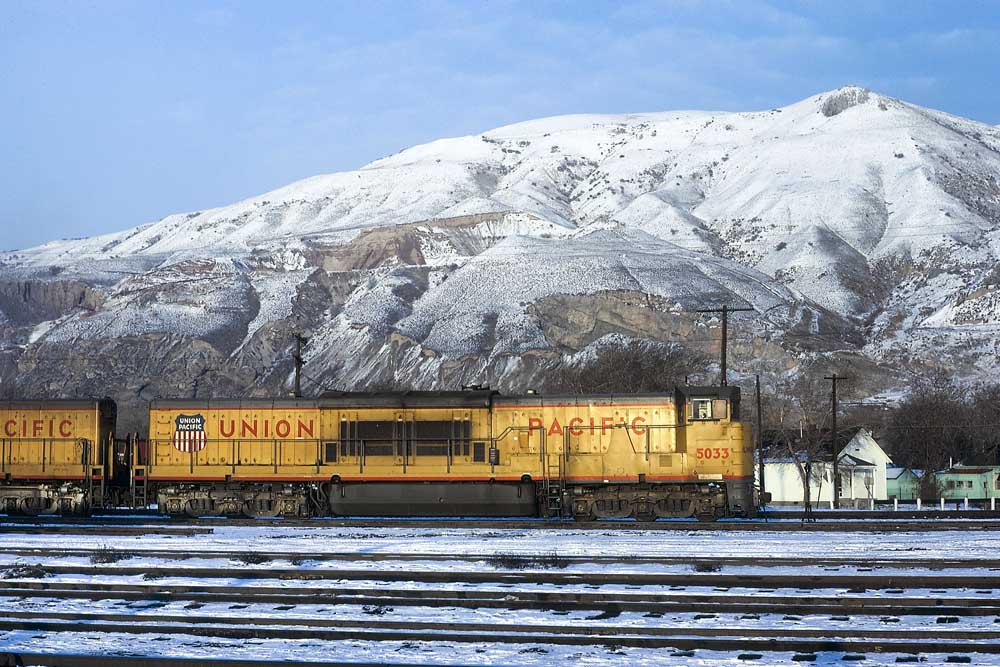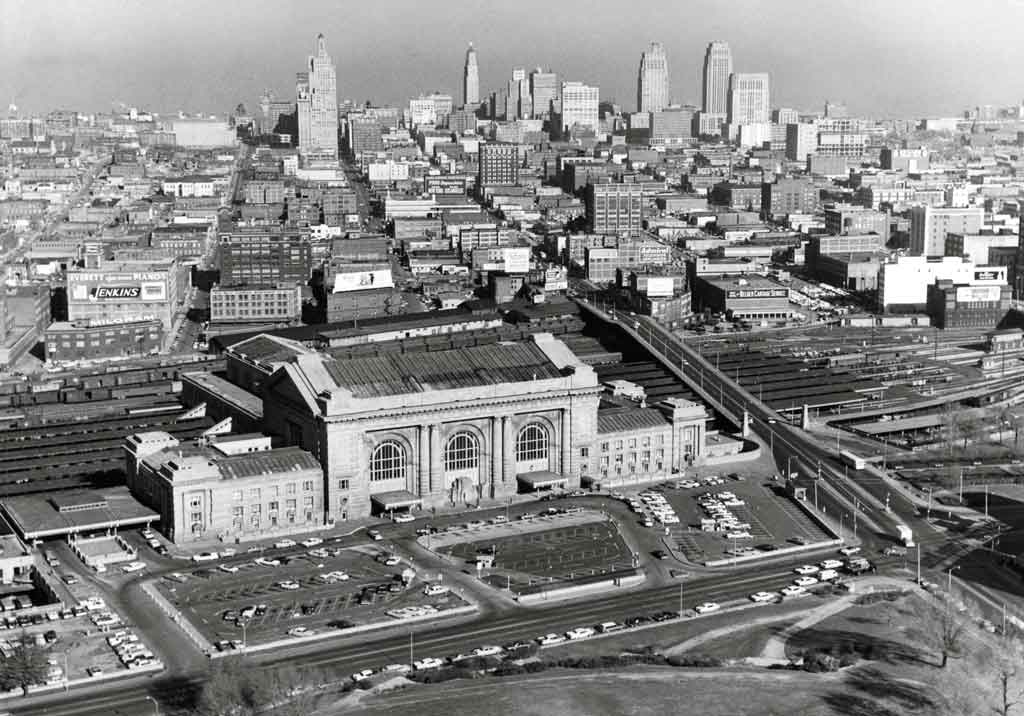Union Pacific’s General Electric U50C locomotives were the last double-diesel model to join the roster, beginning in late 1969. They were, however, the least successful of the three production models the railroad acquired.

GE built 40 U50C locomotives for UP between September 1969 and January 1971. (Their production dates largely mirrored those of the more successful EMD DDA40X.) They carried Nos. 5000-5039. They were 79 feet long, powered by two 12-cylinder FDL prime movers, and rode on two six-wheel trucks reused from UP’s gas-turbine locomotives. In contrast, the original U50 model produced between 1963 and 1965 was 83 feet, 6 inches long, powered by two 16-cylinder FDL prime movers, and rode on four four-wheel trucks connected by a span bolster.
Their first mention in Trains was, fittingly, in the May 1969 issue, which noted “The twin-engined (with V-12’s) A.C./D.C. 5,000 h.p. C-C’s will weigh 417,000 pounds, have a 5,000-gallon fuel capacity, and feature traction motors permanently connected in parallel.” A drawing of the new units appeared in the following issue. By contrast, a single U25B weighed 252,000 pounds.
The first 12 units were delivered sans nose door, a feature that later production units introduced. Those lacking, however, were later retrofitted by UP.
The units, however well intentioned, were plagued by fires in their aluminum wiring. By 1974, 10% of the roster was out of service following such fires. One unit was rewired with copper by UP but a proposal for Morrison-Knudsen to rebuild the remainder of the fleet was deemed cost-prohibitive. Their immense weight was also a factor, leading to frame cracks.
Ford Motor Co. leased four stored U50C locomotives from UP in 1978 to produce electric power during a coal strike. Nos. 5019 and 5027 served at Lorain, Ohio; No. 5039 served at Indianapolis; and Nos. 5017 and 5026 served at Hazelwood, Mo.
General Electric U50C locomotives Nos. 5000-5017 were retired in March 1977 with the remainder of the fleet following in February 1978. All 40 were scrapped, most at Erman-Howell in Turner, Kan., in 1979.














Unfortunately, the preservation movement hadn’t gotten started yet, and not a single example was saved for historical reason. So many one-of-a-kind locomotives were scrapped without a single example saved.
These 22 units were some of the coolest locomotives on the UP. The original units were very reliable and featured the B+B-B+B wheel arrangement with the trucks connected by span bolsters. They featured radiators and blowers on each end of the locomotive which accounted for their longer length. The short pug cabs located high on the front of the units were a boon to train handling offering unexcelled views of rail cars, crew on the ground and track conditions. Interestingly, no units were ever involved in serious head-end crashes.
The 40 U50C’s was an attempt by UP and GE to do two things: (A) They positioned the radiator sections facing each other in the middle of the long hood to share the cooling system and reduce length. They also tried out (B) Aluminum wire which was the rage at the time in an attempt to rid the units of excess weight. However, as has been noted and to UP/GE angst, the aluminum wire were subject to shorts and fires, not up to carrying the current needed to drive the traction motors. This was the major downfall of the units, and the electrical code in later years made use of aluminum wire illegal in almost all cases. This fault was exacerbated by the cracking of the reused gas turbine three wheel trucks which had many miles on them to begin with and oil leaks that plagued the enhines almost from the beginning.
I remember driving by Erman Corporation’s (later Erman Howell) scrap yard back in the late 70’s with my folks and seeing the long lines of U50C’s awaiting the scrappers torch. It was sad that their was not a cheaper way of fixing these units but copper prices were at a high mark and with the cracked truck just did make sense .
For those interested in more insight into these units, As Trains Magazine would say, “Diesels that didn’t,” try finding a copy of Rev. Harold Keekley’s book, “Roaring U50’s. . . Union Pacific’s Twin Diesels” available through Amazon (paperback, 80 pages, https://www.amazon.com/Roaring-U50s-Union-Pacifics-Diesels/dp/0916160068) , George R Cockle & Assoc. (Publisher) or at most online rail centered book stores. Its an interesting read.